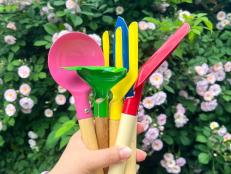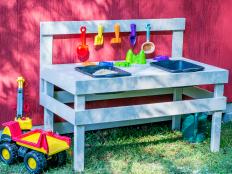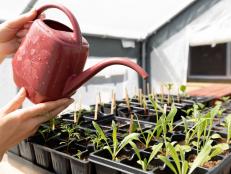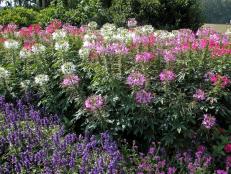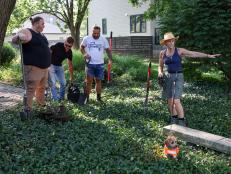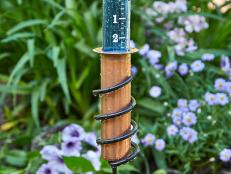Plant a Child-Friendly Garden
Even 2- and 3-year-olds can help plant their own little patch, and watch as life unfolds around them.

Tools and Materials
- child-sized trowel
- child-sized cultivator
- child-sized rake
- child-sized hoe
Step 1: Stake a Claim
Section off a corner of the garden or yard where a child can do as he or she pleases. It doesn't have to be designed or even particularly attractive, just a place where to explore without risk of damaging your prized plants.
Step 2: Let the Children Choose What to Grow
Let the children choose what they'd like to grow. Most often, these will be plants they recognize, such as pumpkins and potatoes. Plants with large seeds, such as beans, sunflowers, and nasturtiums, are easiest for small hands to sow. Though radish seeds are small, children delight in the almost instant growth and harvest. Or plant with a theme, perhaps a "pizza" garden containing tomatoes and peppers as well as herbs such as basil and oregano.
Step 3: Children Love Hiding Places
Consider constructing a tepee from tall poles and twine, to be covered with climbing beans and flowers. (Be sure to leave an opening for a door.) Or create a special room: a circle of tall sunflowers with shorter sunflowers or other flowers between them.
Step 4: Consider Herbs
Many culinary herbs are attractive and have interesting scents. Chives, sage, mint, and basil are good choices for a child's garden. Edible flowers, such as nasturtiums, pansies, violets, and calendulas, are also good.
Step 5: Beware of Toxic Plants
Since many other plants -- even something as familiar as rhubarb leaves -- are toxic, teach your child to consult with you before anything into his or her mouth. Only a few are so toxic they should not be used around children and pets. Two extremely toxic plants are castor bean (Ricinus communis) and precatory bean or rosary pea (Abrus). Many other plants are toxic in larger quantities and should be avoided in a child's garden. These include angel's trumpet (Brugmansia), delphinium, foxglove (Digitalis), euonymus, morning glory (Ipomoea), St. Johnswort (Hypericum), lantana, cardinal flower (Lobelia cardinalis), sweet alyssum (Lobularia maritima), love-in-a-mist (Nigella damascena), and valerian (V. officinalis).






